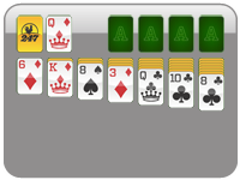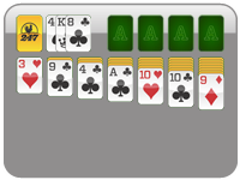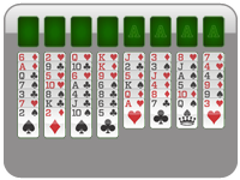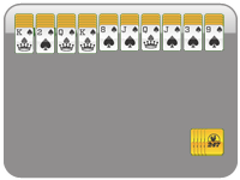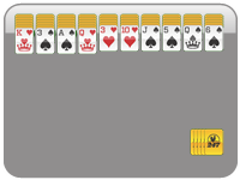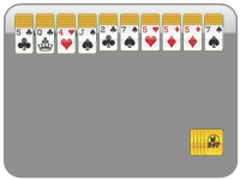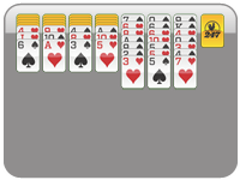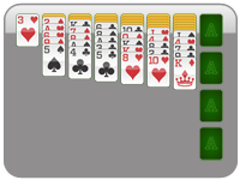How to Play Solitaire (For Beginners Online)
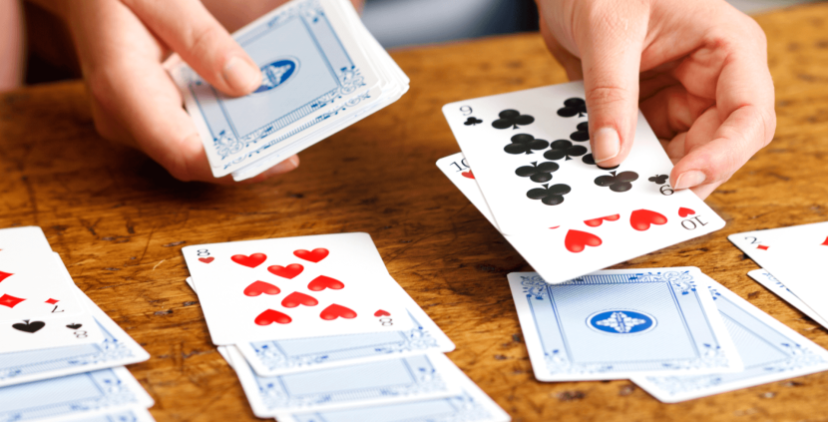
Solitaire is a game all about counting and arrangement. The wonderful thing about it is that it's one of the easiest games to learn yourself, with many variations asking nothing more of you than a simple deck of cards and a little patience.
If you're looking for how to play Solitaire, you've come to the right place! We're here to show you the basic mechanics of this classic card game.
What are the basics of Solitaire?
What is the basic game of Solitaire?
First, you should know that the phrase “solitaire” encapsulates many variations of single-player card games with different rulesets—these are also called patience games.
The most recognized variation of the game in the US, with its familiar seven-lane setup, is commonly known as Klondike or classic Solitaire. This version of the game is the easiest to start with, so we'll explain its specific terms and what challenges it offers in this guide.
The overall aim of Solitaire is to arrange a randomly sorted layout of cards into four ascending stacks, called foundations, designated by their suit. If you're unfamiliar, those suits are hearts, spades, diamonds, and clubs. Let's explain some terms you need to know to play.
Solitaire terms you need to know
Solitaire has a few key terms you should pick up on if you want to understand the game.
The Tableau are the piles of cards that you'll arrange in front of you to start the game. In classic Solitaire, there will be seven of these piles. You'll arrange these first.
The Foundations are the four stacks you aim to create—that's the game's overall objective. As mentioned, each will be an ascending stack of hearts, spades, diamonds, and clubs.
The Stock is all your remaining cards left in the deck from when you arranged your initial tableau. You can draw from this pile.
The Waste is where you'll place cards drawn from the stock that you could not play upon drawing. Think of it as your discard pile. These are brought back into your stock when that runs out.
Another important note is that Solitaire is an “aces low” game. Essentially, this means aces are the lowest value card with a value of 1. Remember when sorting your cards that foundations must begin with the ace of their respective suit.
That's a lot of important Solitaire lingo, but how is the game set up?
How to set up a Solitaire game
A single deck of 52 standard playing cards is all you need for setting up Solitaire. Set aside the rule card or any additional cards—you won't need those.
If you're playing Solitaire with a real deck, consider setting up the game requires time, patience, and table space. Some folks may be unable to accommodate that, which is why Solitaire is so popularly played digitally!
You'll need to construct your tableau piles to begin setting up the game. Shuffle the deck and, making sure you have enough room, place a random card down face-up to create your first tableau—think of the face-up card as the bottom of your piles.
Repeat this process with the next pile; however, add a face-down card before the bottom card. You'll add a face-down card for each additional pile until you have seven total piles. Every face-down card should be above and behind the bottom card, partially visible in a cascading column.
For reference, here's what it should look like when finished:
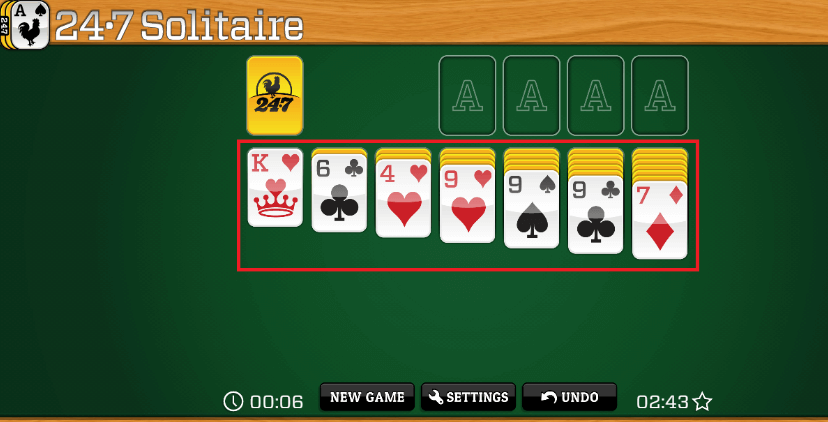
If you're confused, just remember that your tableau piles will increase until the 7th pile begins with six cards face-down and one face-up.
Don't worry, you're almost there! If all is correct, you'll still have 24 cards left in your deck. These will become your stock pile. Set them aside wherever you're comfortable, with enough room to form your waste pile next to it.
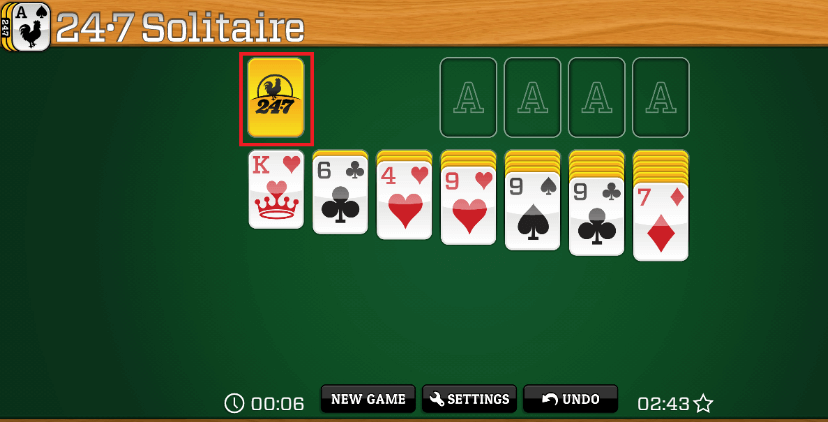
Finally, while your foundations aren't formed yet, ensure you have space for four extra piles of cards to create them soon.
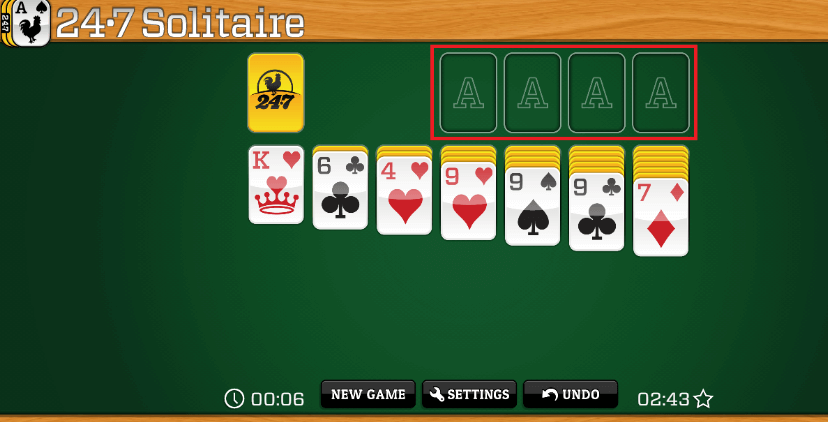
Congratulations! You've finally set up your own game of solitaire. Let's play already!
How to play classic Solitaire for beginners online (step-by-step instructions)
Here are the instructions on how to play Solitaire. Solitaire is primarily a game of sorting, arrangement, and strategy. As a refresher, here's what the suit order should be: Ace, 2, 3, 4, 5, 6, 7, 8, 9, 10, Joker, Queen, King. You will build cards in descending order on the tableau and your foundations in ascending order.
Your goal is to create four foundational stacks of each suit with the cards in your deck. To do this, you must draw cards and arrange them in descending order across your seven tableau piles.
Importantly, to do this, you must alternate the color of your cards in each single tableau. For instance, you can only play a black 8 on top of a red 9 in your tableau, and so on. The suit of the card doesn't necessarily matter at this stage.
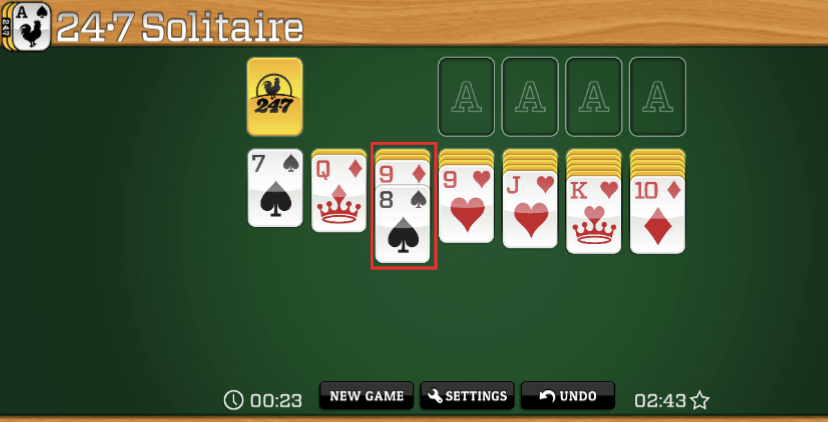
You can move cards already revealed on your tableau or use cards freshly drawn from the stock.
A foundational pile can only be created with an ace first, as it is the lowest card in this game. Similarly, if you find an empty pile space in your tableau, you can only create a new stack with a king, as it's the highest.
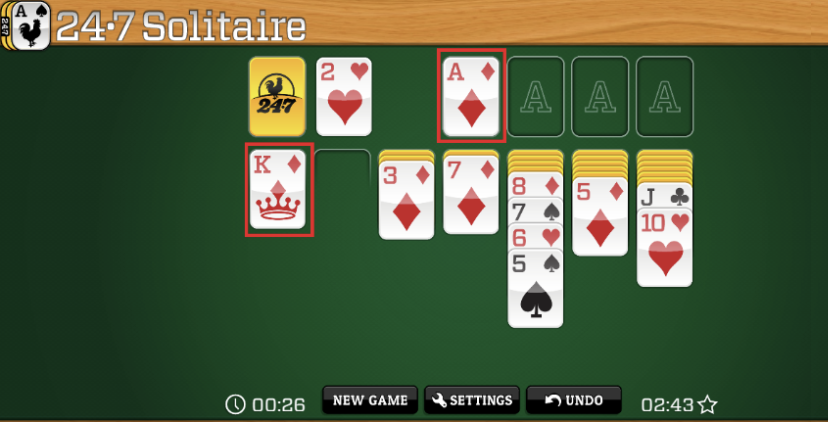
Order of play in classic Solitaire
If you want to learn to play Solitaire, you need to look at the loop of the game. Fortunately, the game loop is simple. Firstly, you can move the revealed cards in your tableau any time you want if you have any plays to make. You can place any aces into their foundation if you have any, and you can begin stacking any valid card combinations across the seven piles.
When drawing from your stock pile, you can play 1 Card or 3 Card Solitaire (*cough* 247 Solitaire offers both *cough*). The former is where you draw individual cards, and the latter is where you draw three cards at a time and attempt to play them in the order you drew. It's your choice, but 1 Card is perfect for beginners.
If you can use the card you drew, you may place it in its appropriate place.
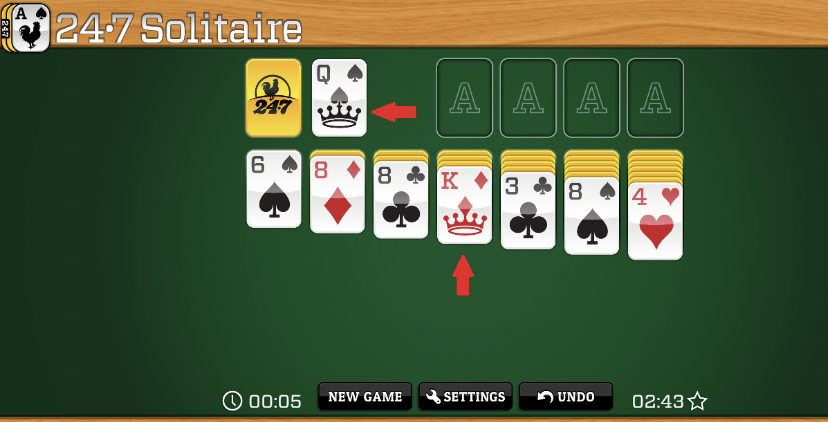
If you can't, that card goes to the waste pile face-up and is out of play for now.
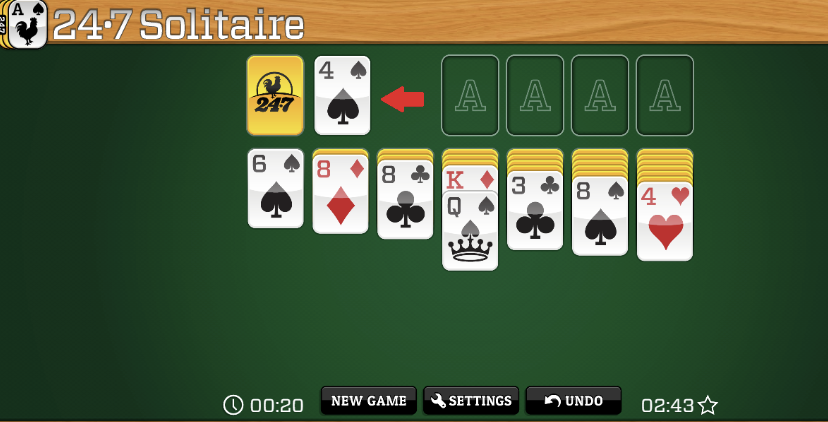
Make sure to preserve the order of the cards at all times. When you run out of cards in the stock, you'll take your entire waste pile and flip it back over without shuffling to restore your stock pile.
As you arrange your cards across the field of play and a tableau stack is left only with face-down cards, you can flip the bottom card up to reveal and play it if possible. You can (and should) use empty tableau piles whenever possible if you have a king to move to it.
How to win a game of Solitaire
Solitaire game instructions for winning all revolve around prioritizing revealing every face-down card in the tableau and bringing them into play. If you don't, revealing these cards with the stock pile added to tableau piles can become increasingly complicated. When you've revealed every unknown card, you should have a much easier time slotting every card from your stock into the tableau.
Remember that you can build your foundations as you go, too. If you reveal all your cards from your stock or tableau spaces and put them in play, then your last plays will complete your foundations. If you've achieved this, then congratulations! You've won your first game of solitaire!
I can't progress! What should I do?
While playing Solitaire, it's possible to run into a roadblock—you just can't seem to find any logical moves. While it's true that first-timers may have more difficulty completing games, don't take this as an indication of your skill!
Due to the nature of the Klondike ruleset, not every Solitaire game is winnable. Amazingly, 52-card deck probabilities are so complex that mathematicians can only confidently say that around 80% of classic solitaire games are indeed winnable.
Unfortunately, a single sub-optimal play early in the game can turn an otherwise winnable shuffle into an unwinnable game. Solitaire is a game that's simple to learn but can be challenging to master because of the forward-thinking strategies required. It's like solving a puzzle cube.
It's easy for beginners to focus too much on a single tableau or foundation, not realizing how they might cut off further plays. What would otherwise be a “correct” move may be a hindrance.
If you're stuck and frustrated or not having fun, resetting the game may be for the best. Losing a game is always in the cards, even for the best players. And it's easy to start again when you're playing digitally!
Find out the fastest Solitaire game recorded and learn to increase your speed in playing.
Learn to play Solitaire without the hassle of setup
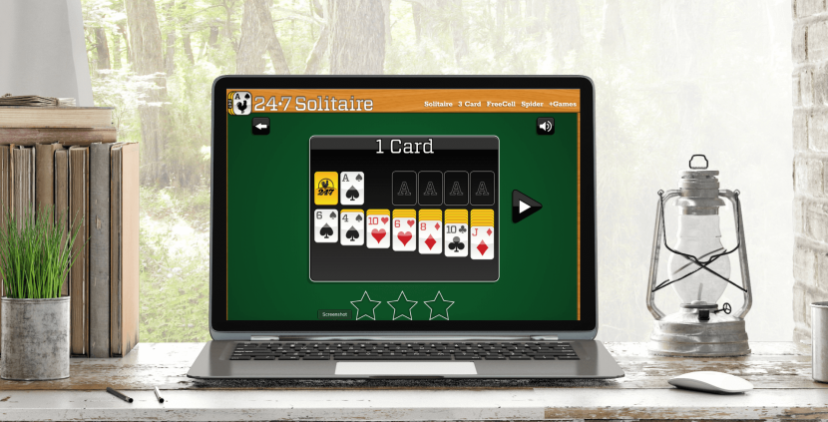
Solitaire is a complex and infinitely replayable game, and, because it's so simple to learn, it's quick to pick up. Since setting up Solitaire can sometimes be a pain, online Solitaire programs have existed for almost as long as personal computers.
To hone your solitaire skills, our Solitaire platform has classic Solitaire and over eight unique variations. You can turn on auto-play to get used to the game and track your best times to gauge your progress. Plus, it's all free with no login required.
In no time, you should know how to play Solitaire like a pro!
Solitaire Games
More Solitaire Games
More Games
Solitaire News
Disclaimer
DISCLAIMER: The games on this website are using PLAY (fake) money. No payouts will be awarded, there are no "winnings", as all games represented by 247 Games LLC are free to play. Play strictly for fun.

